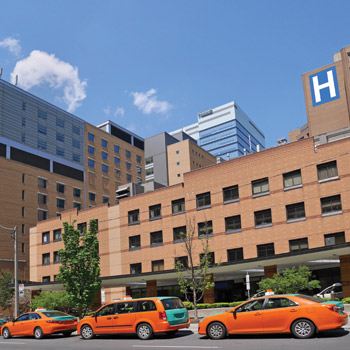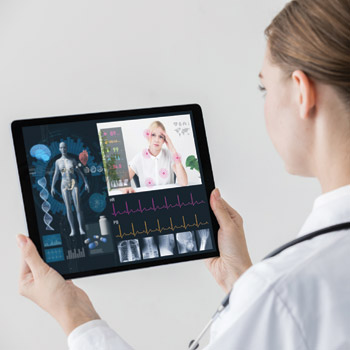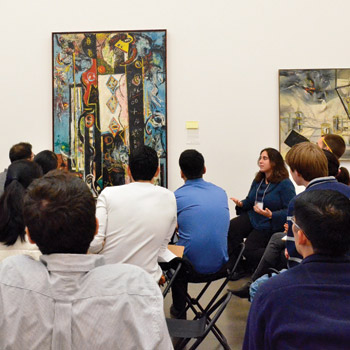Transportation doesn't fix all no-show woes
Health care systems are creating transportation programs to shuttle patients not only to appointments, but to pharmacies and locations to help with treatment.
When patients miss appointments because they lack reliable transportation, valuable time slots are wasted and health outcomes can decline. Paying for and providing rides to patients may seem like a straightforward and cost-effective solution, whether it involves using local cab companies or coordinating health care-specific options offered by ride-sharing services such as Uber or Lyft. However, some health systems have found that it is not necessarily the answer they hoped it would be.
“Patients missing appointments is a large, complex, multifactorial issue,” said Bailey Miles, MD, medical director of the Priority Access Primary Care Program at Johns Hopkins Community Physicians at East Baltimore Medical Center.

One study of nearly 800 Medicaid patients coming for a primary care visit in a six-month period from October 2016 to April 2017 in West Philadelphia illustrates this point well. Patients who were offered free rides in the study had a missed appointment rate of 36.5%, nearly identical to the 36.7% seen in a control arm in which rides were not offered.
Krisda H. Chaiyachati, MD, MPH, MSHP, medical director of FirstCall Virtual Care at the University of Pennsylvania's Perelman School of Medicine in Philadelphia and lead author on that study, which appeared in JAMA Internal Medicine in March, said he was extremely surprised by these findings, as patients who are late to or miss appointments often say it is because their ride fell through.
However, a follow-up qualitative study done in conjunction with the first study, in which 45 patients were asked the reason why they missed appointments, revealed more insights.
“By and large, the response that we got is that transportation can be a thing, but it's not always the thing that causes them to miss their appointments,” Dr. Chaiyachati said.
People with low incomes can live tumultuous lives, he said, and they are dependent on the network around them. They may need someone to take care of them, or they may be taking care of a family member, and problems with those arrangements, such as a sick child, were often at the core of why they missed an appointment.
“Transportation in that storyline becomes one of many different things that competes with their ability to make it to an appointment. Understanding these larger contexts for why patients are missing appointments is very important,” he said. “I did not walk away pessimistic about ride-sharing or transportation, but I think that, like everything we do, it's more complex than it appears at first, and it's just one tool amongst many.”
Similar findings
Dr. Miles' clinic, which he co-runs with colleague Kate Rediger, MSN, CRNP, and which serves a high-utilizer population at Johns Hopkins' urban medical home, started using a taxi service about three years ago to reduce barriers to patients getting to their appointments. The clinic team worked with a local taxi company that was already contracted to provide rides for other parts of the larger Johns Hopkins community, primarily for one-time use such as when a patient is discharged from the hospital.
As in Dr. Chaiyachati's experience, their results were disappointing. Dr. Miles and Ms. Rediger estimated that about one in every four or five people for whom they sent a taxi did not actually make it to their appointment.
“Patients have a lot of other barriers and might cite transportation as the major issue, but when it came right down to it, and we sent cabs to their homes, many other barriers would arise,” said Ms. Rediger, director of clinical operations in the priority access clinic. “[Providing a ride] was not a simple, quick fix.”
In addition, operational complications made the program very time-consuming for their five-person team, which includes a behavioral health specialist, a community health worker, and a medical assistant who also functions as a patient navigator. For example, the steps for requesting a cab could be quite cumbersome, Ms. Rediger said. If a patient requested a cab, someone from the team filled out a cab request form, which was usually faxed to the cab company the day before the patient's appointment. Once the patient was picked up and came to the clinic, someone from the team called the cab company for the return ride.
The team had situations in which the fax did not get to the cab company, and no taxi was dispatched. If the clinic received a call from the patient that the cab had not arrived, someone from the team called the cab company and was often left on hold for several minutes in the middle of a busy clinic day. By the time the cab finally arrived in these cases, the patient was often at least an hour late for his or her appointment.
Another issue, Dr. Miles said, was that some of the cab drivers may not have waited long enough when picking patients up. Some patients reported that the cab left before he or she could walk out the door of their home.
The clinic still has access to the taxi service, but rides are no longer offered to everyone. Instead, they are now used as a perk for established patients, which reflects how the clinic has evolved, Dr. Miles said.
“When the primary care program started, transportation assistance was highlighted as a benefit of the program in the information provided to new patients. However, about a year ago, we stopped describing it as an incentive, and now use it as a backup form of transportation,” he said.
Dr. Miles said they made that change not only because of the logistical problems involved in arranging cab rides but because they wanted to ensure that patients were able to develop another reliable source of transportation once they graduated from the program.
To motivate patients to apply for free or reduced public transit vouchers that might be available to them, they are given a time limit for how long they can use the taxi service as a backup, Dr. Miles said. Community health workers from the team help assess several social determinants of health, including transportation. If community health workers determine that lack of transportation is a barrier to care, the team evaluates patients' likely eligibility for free or reduced public transit. If they think that qualification is very likely due to a medical condition (such as severe chronic obstructive pulmonary disease or history of amputation or serious mental illness), they explain this to patients and help them apply, then assist with transportation for three months or until the Maryland Transit Administration responds, whichever comes first.
If patients find out they do not qualify, or if they never apply, the rides provided by the clinic end after three months and bus tokens are offered. If the team does not think patients will qualify for free public transportation, they are not offered cab rides regularly, although they may get one occasionally on a case-by-case basis, Dr. Miles said.
“Generally, we have been good at predicting who will qualify for the free public transportation, and I can think of only one patient that did not qualify and no longer received regular cab rides from us. She was able to get rides from friends or relatives, and we provided bus tokens and an occasional cab ride if her ride fell through,” he said.
Weighing the decision
Dr. Chaiyachati said he still believes that providing rides can be the right way to help some patients, particularly those who have acute problems that require frequent care or those who are receiving a time-sensitive treatment, such as chemotherapy. Offering rides to patients who are coming in for a less urgent matter, such as preventive screenings, will likely be less effective because those patients might not see any harm in postponing their appointments if a problem arises in their life, he said.
He said there are two aspects for physicians to consider when debating whether the cost of providing rides is worth the investment. One is lost revenue when appointments are missed. For example, unused clinical spaces that don't generate RVUs are part of the financial calculus when considering whether supporting patients' ability to get to appointments has quantifiable financial benefits.
The other aspect is, of course, better health outcomes. “The return on investment is harder to quantify here because outcomes occur in the long term, but it is no less worthwhile. Patients want better health, and financially these efforts make sense when care is reimbursed under value-based payment models like capitation or bundles,” Dr. Chaiyachati said. “Look at where your real return on investment is going to be strongest, and focus on those areas to start.”
He suggested that physicians also look for alternative ways to meet frequent no-show patients where they are, such as in-home visits or telemedicine.
“When we talk about telemedicine, we typically talk about access for people who live in distant locations, but maybe we should think about it from a convenience standpoint,” he said. “Perhaps it is difficult for a low-income person to break away from their job for an hour or two, for example. We should consider giving them access to alternative care models, even though they are only a mile or two down the street.”
Pilot program under way
Geisinger, a health system that serves more than 1.5 million patients in Pennsylvania and New Jersey, recently looked at additional ways to connect with and help patients.
“We wanted to meet our patients' needs beyond the four walls of the hospital and clinics” and look at the many variables that can impact health, said Allison Hess, vice president of health innovations at the Steele Institute for Healthcare Innovation at Geisinger.
Food insecurity was one issue that was examined, leading to the creation of a program to match diabetic patients with healthy fare. No-show rates were another, so the system launched a two-pronged program: an urban one for patients who live within 25 miles of two Geisinger locations in Scranton, Pa., and a rural one for patients who live within 50 miles of a Danville, Pa., location. Rides are available for a variety of medically related purposes, such as to get to primary care and subspecialty appointments and to pick up prescriptions.
The pilot program to provide rides started in April after about a year of planning. A local transportation partner helps assess each patient's needs to identify the most economical way to assist. If patients have access to public transit, for example, they are given information on how to use it. If they do not, a direct ride can be arranged. Whichever option is chosen, all costs are covered by Geisinger.
“We feel that by targeting these specific populations, carefully analyzing our data, and applying what we learn from other ride programs, we will see far fewer patients missing scheduled appointments,” Ms. Hess said.
The first phase of the project is providing transportation to those referred by a Geisinger Health Plan (GHP) case manager or a GHP community health assistant.
Based on the results of this pilot program, Geisinger may expand to a broader population, Ms. Hess said. The next phase will extend to Geisinger patients with other insurance coverage, and the third phase will include strategic community partners.
In the first four months, about 60% of rides were provided in the urban subset, said Eileen Evert, Geisinger's senior director of health and wellness. Overall, about 800 total rides were provided to 400 unique riders, with more than 90% being for medical appointments.
Ms. Evert said that it is too early in the process to assess results but that the outcomes they will be reviewing include ED use and hospital readmissions, as well as rider satisfaction: Are the cars clean? Was the trip easy? Does the patient feel his or her quality of life is improved?
“We are excited to start digging into the data once we hit the six-month mark and have measurable outcomes,” Ms. Evert said.





